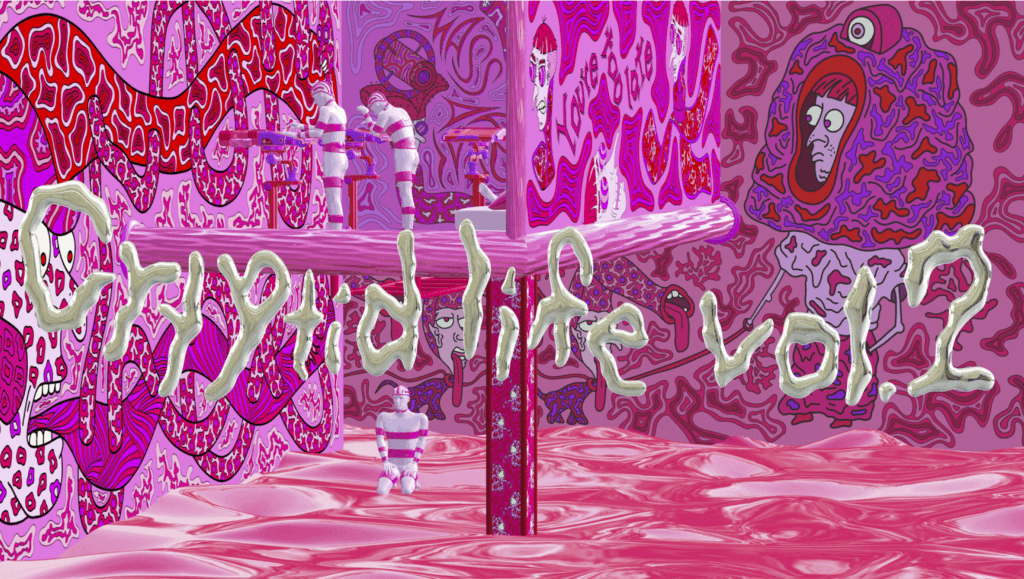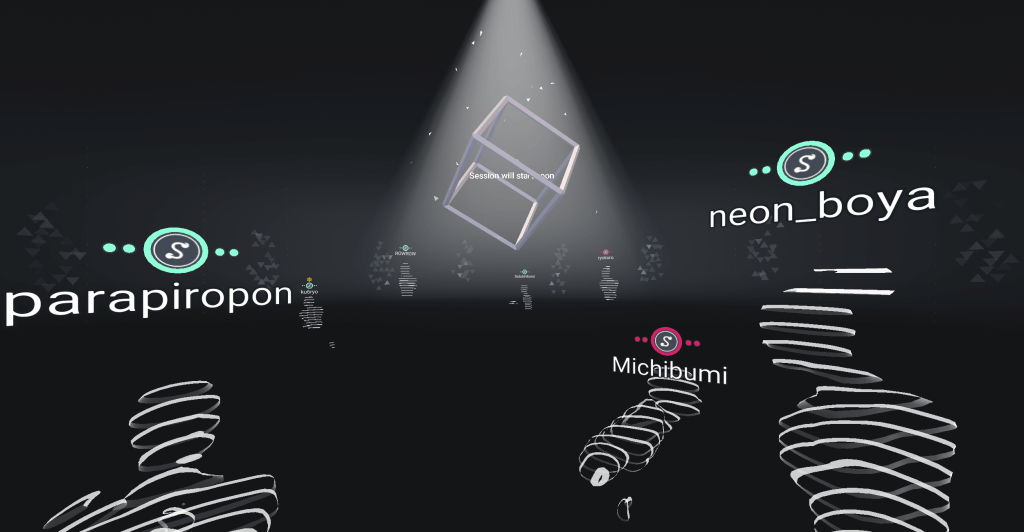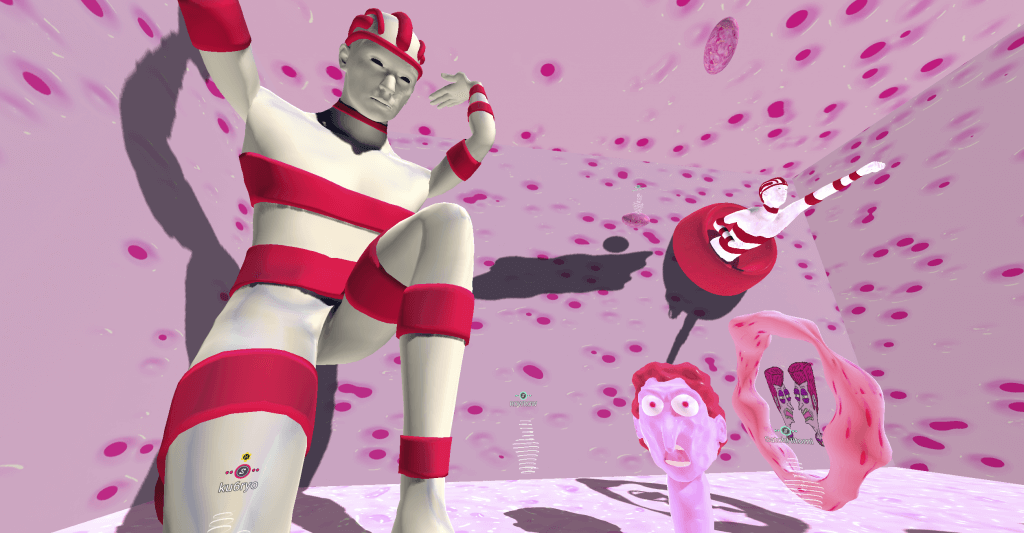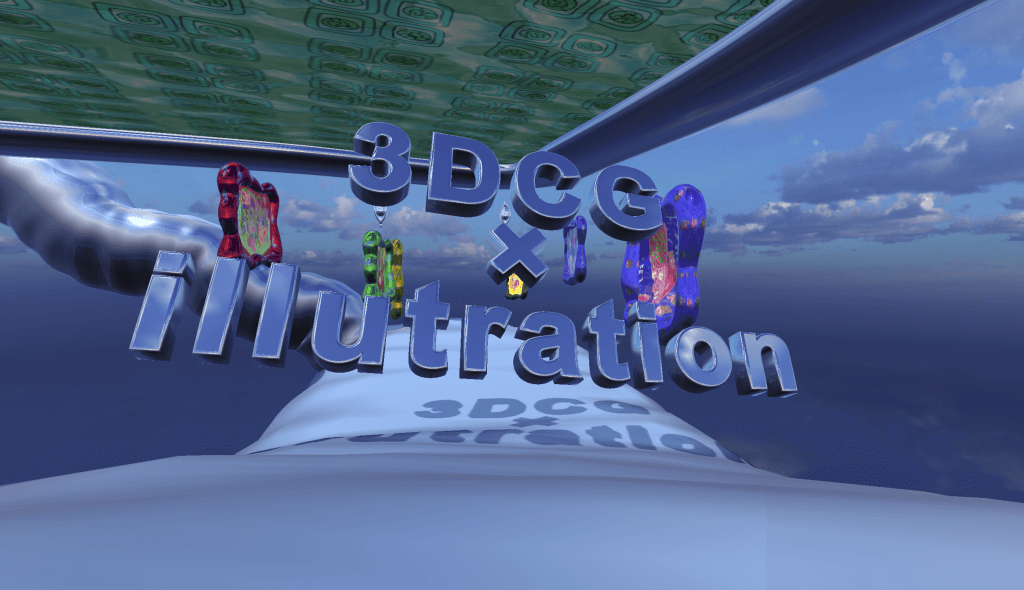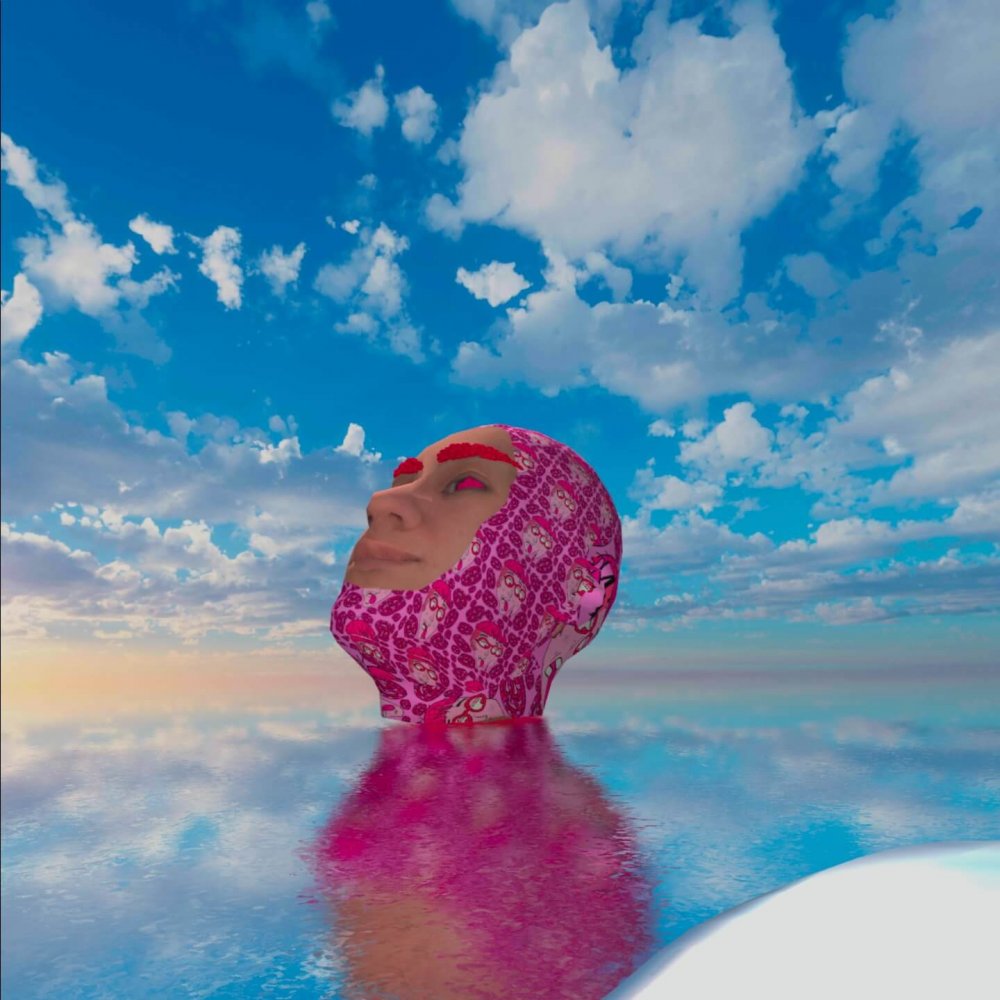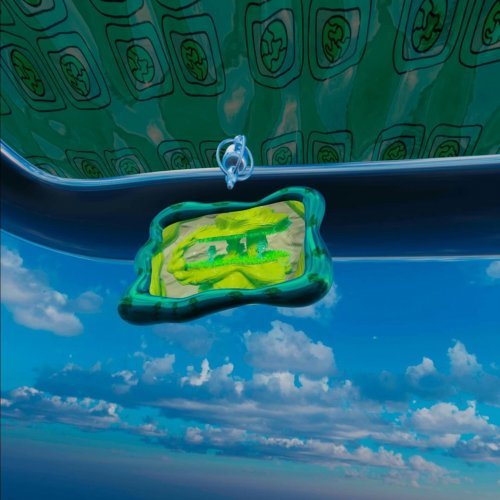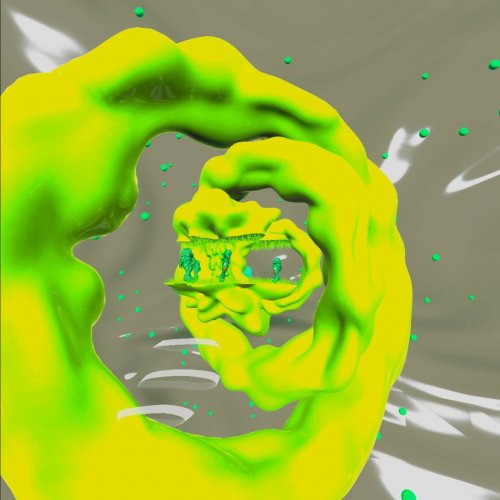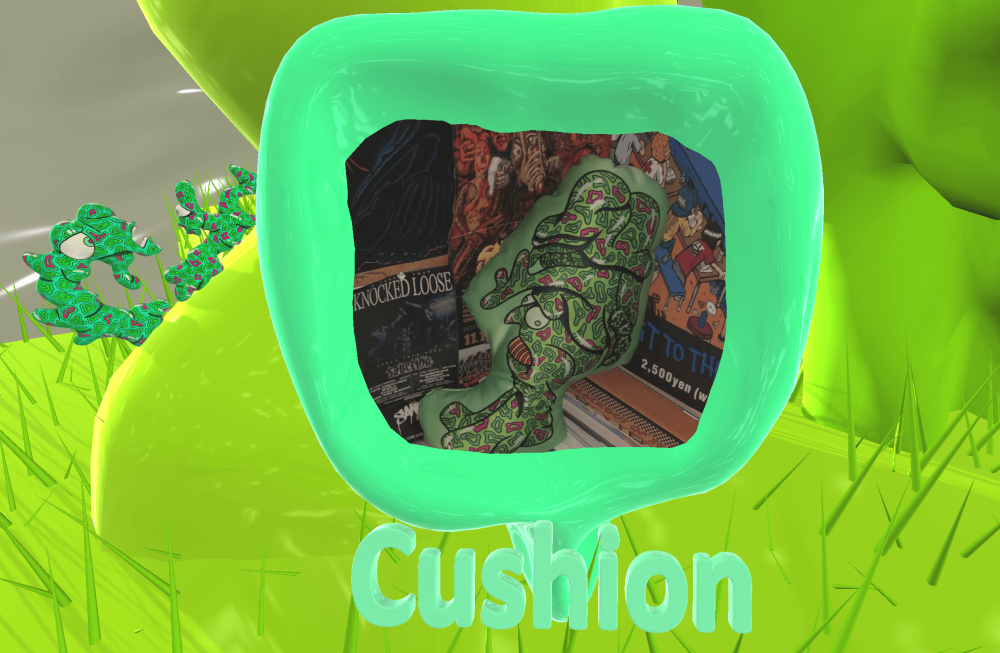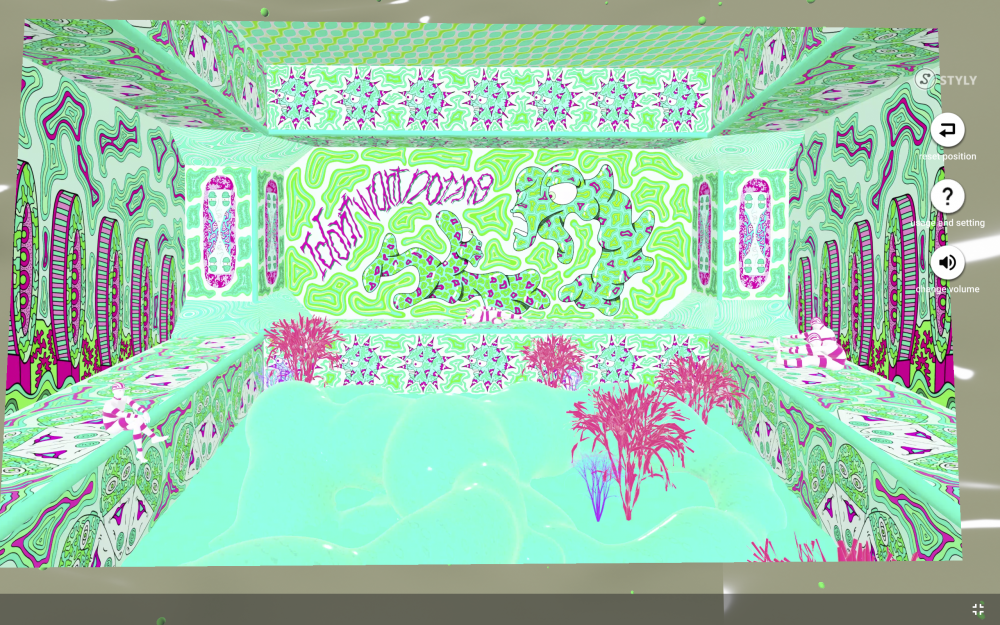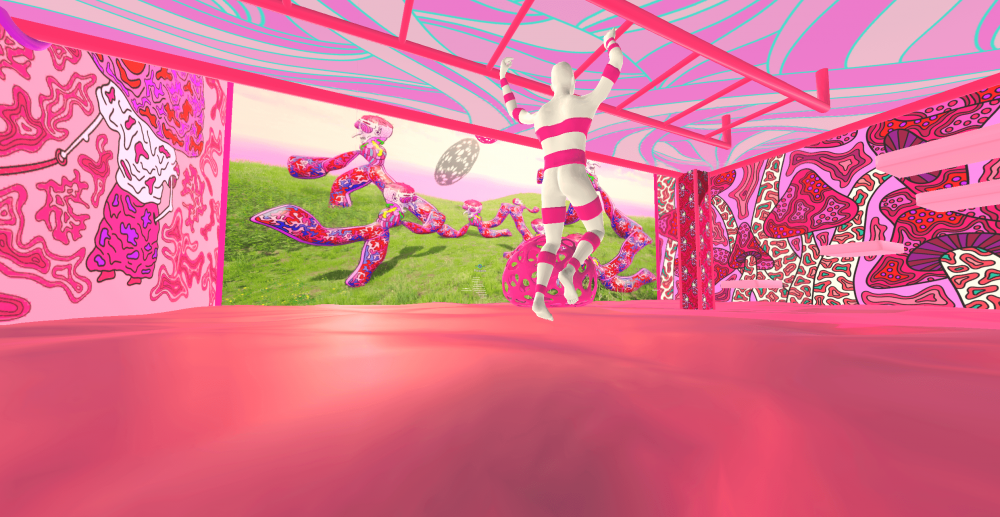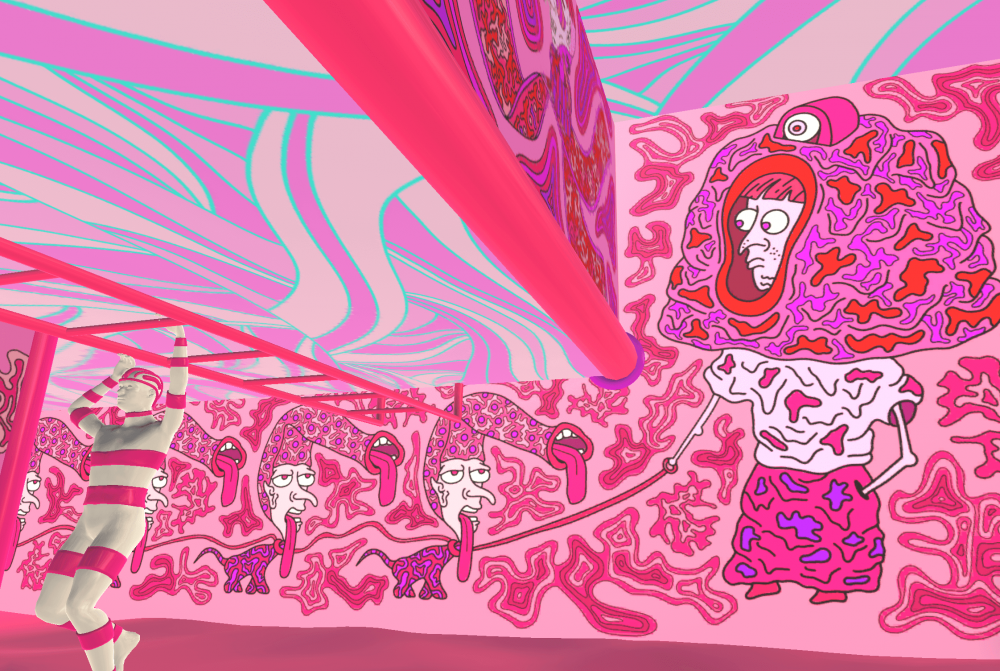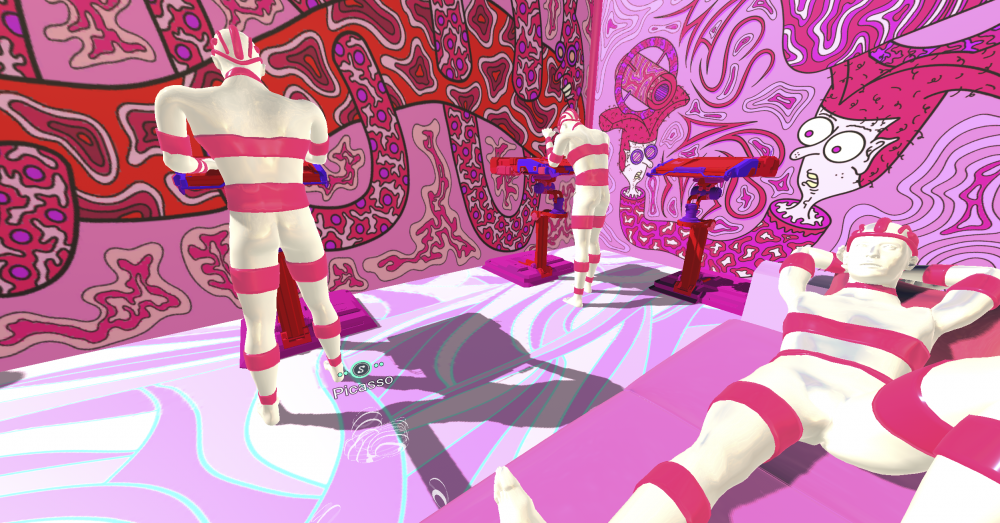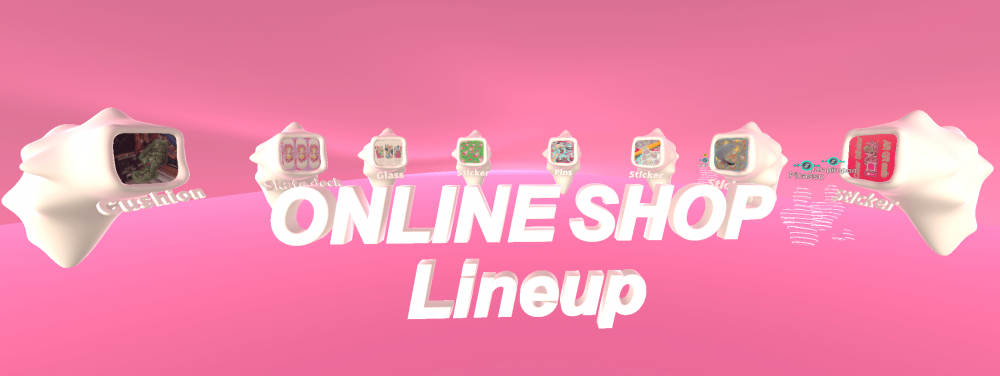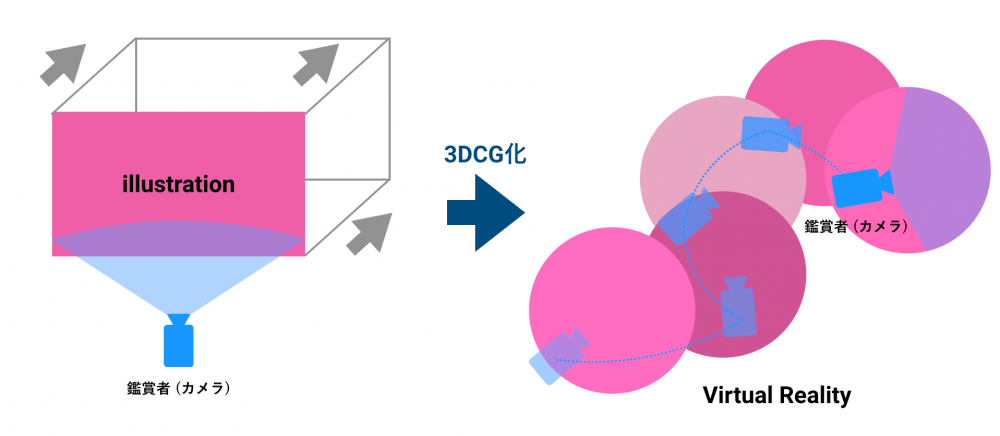I would like to introduce the STYLY Online Tour “Cryptid life – vol.2” held by TOMORO KINOSHITA and STYLY.
STYLY Online Tour is an event where you can experience VR works while listening to the stories of the creators.
In this “Cryptid life – vol.2”, we experienced the work of Tomoro Kinoshita, who has created many works that transcend genres such as VR, video, and cryptic art.
It was a tour of a one-of-a-kind world that depicts a variety of living creatures in a large, colorful space that cannot be experienced in reality.
Profile of TOMORO KINOSHITA
Tomoro Kinoshita’s main activity is to create works that fuse 3DCG and illustrations using VR. He uses pop colors and strange creatures to draw the viewer’s attention to his work. He originally started his career as an illustrator, but began to challenge himself to create works using VR, which allows him to immerse himself in his own world view. He would like to express his vision of the world without any noise.
He is also involved in creating the opening video for Nankai Candies and Shizu-chan’s YouTube channel.
Twitter: https://twitter.com/rowrow_tt
Instagram: https://www.instagram.com/rowrow_t/
Works: https://gallery.styly.cc/search?q=%23ROWROW%20%23Art
STYLY Online Tour 「Cryptid life – vol.2」
We experienced a total of six works, including new works, while listening to Tomoro Kinoshita’s explanation.
In this article, I have described the works with images, but you can feel the charm of the works more by experiencing them in VR. Please click on the link to experience the work for yourself!
Works: https://gallery.styly.cc/search?q=%23ROWROW%20%23Art
Start the tour
Wearing VR goggles to the event, participants gathered together, displayed as a silhouette outline of a body. You will receive a brief explanation of how to operate the system.
1. “Same”
Above is a picture of the first work.
As you enter the VR space, you feel as if you are being thrown into a new world as the work surrounds you. Combined with the music and the movement of the objects, the artwork jumps into your whole body.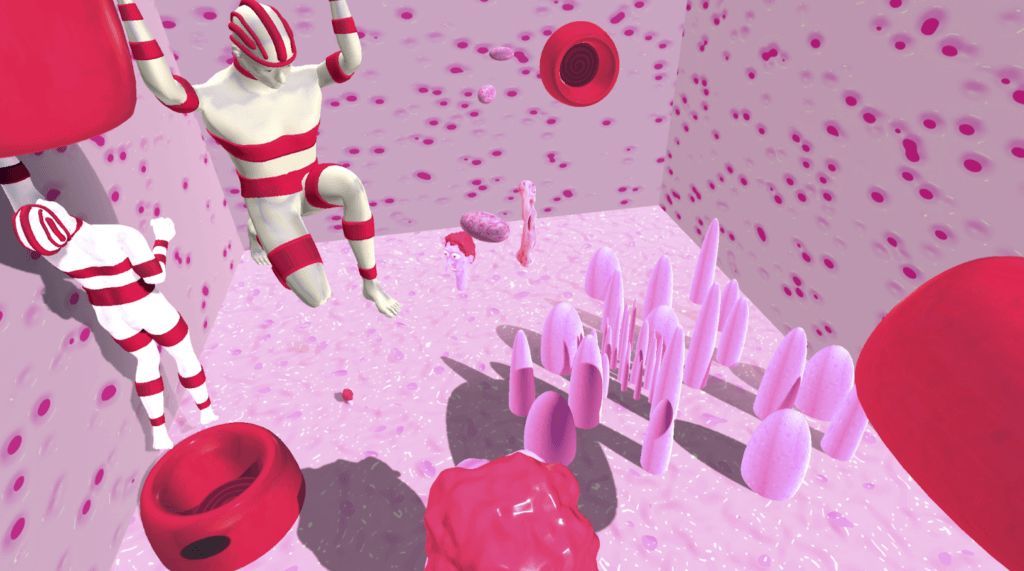
The space of the ceiling and walls with skin patterns. A giant figure wearing a red sash that seems to support the space. Giants jumping out of the walls. An object with a deformed, shocking expression on its human face. An object that looks like a painting with that character on it. A sphere that looks like reddish flesh that repeatedly expands and contracts.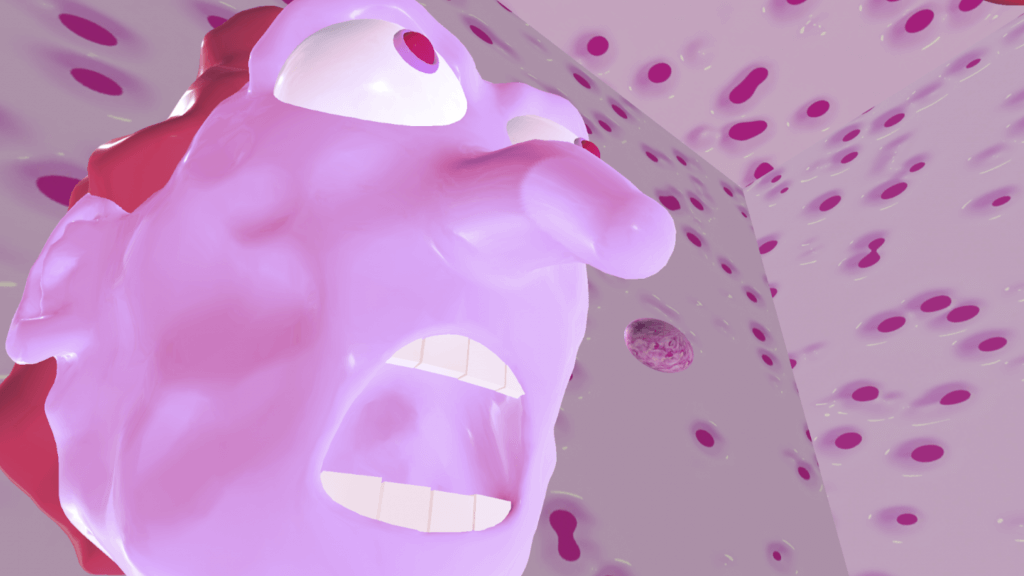
Since you can move around freely in the VR space, you can make eye contact with the giants and characters, and see the works through the eyes of the characters.
Participants enjoyed climbing up the walls to see the angles of the works that could only be seen from above, based on Tomoro Kinoshita’s explanations.
2. “Feel It”
The second work, “Feel It,” is a cloud-like path in the air, and it looks like a museum where Tomoro Kinoshita’s illustrations are lined up along the cloud path.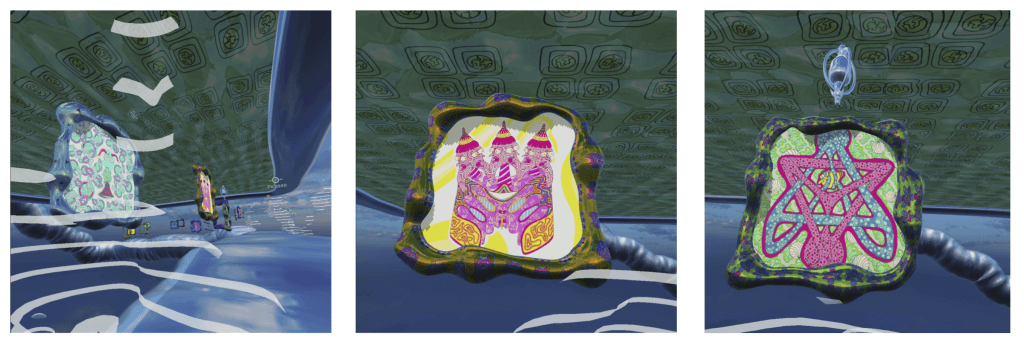
As you proceed along the path, the words “3DCG x illustration” appear. From there, the back of the room is filled with works in which 3DCG characters appear and 3DCG images are repeated.
Here, you can catch a glimpse of the transition of the artist’s work.
You can climb to the upper floor of this work. When you climb up there, objects like those in the previous exhibition areas disappear and the entire floor of the scene becomes a water surface. There is a huge object of a face.
This object is a 3D model with a texture of TOMORO KINOSHITA’s face pasted on it. I wonder if it represents the fact that you have become a mixed entity with 3D and illustration as you have added 3DCG to your illustrations.
Tomoro Kinoshita’s objects, which have become one with 3DCG and illustration, seem to be staring at the sky and looking further ahead.
3. “Division”
This is a work that can be placed inside the 3D painting exhibited in “Feel It,” which was introduced in the previous section. It has a nested structure, with one more work inside another.
|
This is a work that allows you |
There is a scene of the work within the work. |
In the center of the work, there is the word “Cushion” and a monitor. Around that monitor, there are characters with human-like faces that look almost like people, and there are also objects that look like characters that are not quite human-like. Is this Cushion something to sit on?
If you follow the arrows in the work and go to the edge of the work, you will see a video that covers the work at the end. Here, you can see a 2D monitor with illustrations pasted on it in a 3DCG room.
The work takes on a repetitive structure, with 3DCG within 3DCG, illustrations within 3DCG, and 3D within 2D monitors. Each object has a character and a landscape that evokes a story, and the work echoes itself as an effect.
There is an attempt to re-structure the relationship within the medium, such as the incarnation of the characters from the illustrations as 3DCG in space, and the appearance of the characters on the monitor. You get the feeling that you are playing with the characters you have created yourself and the worldview you have created yourself. There is a sense of fun as if the participants themselves are unsure of which layer of the work they are on.
4. “Fantasy box”
As the title “Fantasy box” suggests, this work seems to spread the artist’s imagination to the entire space.
I was impressed by the following words of Tomoro Kinoshita who said during the viewing.
“When I see my illustrations in VR, I feel indescribably moved.
I can’t draw such a big picture, and the moving object is something I could never do”.
Tomoro Kinoshita also talked about the characters in his works as follows.
“When I create CG or VR space, the scenes that come to my mind are usually based on the characters. So I guess you could say that for me, characters are the ones who open doors”.
Among TOMORO KINOSHITA’s VR works, this one is said to be from the timing when he was able to use the VR medium relatively freely. As such, this is a work in which you can feel the joy of expressing your favorite characters and textures throughout your field of vision.
5. “Common scenery”
This is one of Tomoro Kinoshita’s new works. The work consists of three parts: a large room, its second floor, and a protruding space at the back of the room.
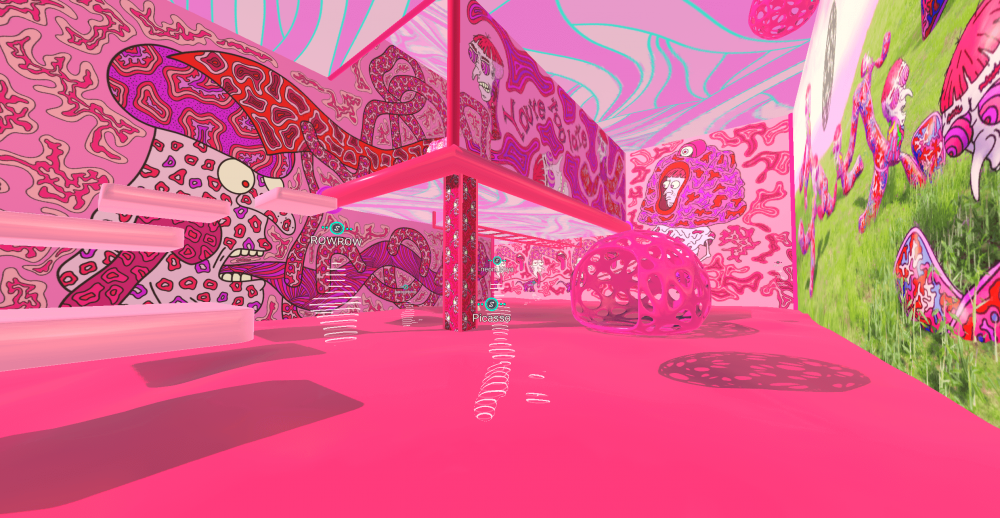 In the large room, there is a giant on a cloud ladder on the ceiling of the second floor. On one wall, there is a human figure with a banded body, gamboling happily in a meadow. On the other wall, there is a person walking a human-like creature with an extended head and mouth. In addition, there are umbrella-like objects of red goldenrod mushroom in some places.
In the large room, there is a giant on a cloud ladder on the ceiling of the second floor. On one wall, there is a human figure with a banded body, gamboling happily in a meadow. On the other wall, there is a person walking a human-like creature with an extended head and mouth. In addition, there are umbrella-like objects of red goldenrod mushroom in some places.
On the second floor, there are three giants, two of which are playing some sort of game or working at a desk. One of them is relaxing on a couch.
Also, at the back of the large room, there is a video playing. I think you will be able to see an unexpected side of one of the characters that has appeared so far.
6. “Odd lake”
The last stage, “Odd lake,” was the first VR work created by Tomoro Kinoshita. Since this was his first work, he used STYLY assets such as butterflies and bubble particles. I can see that they are experimenting and creating VR art.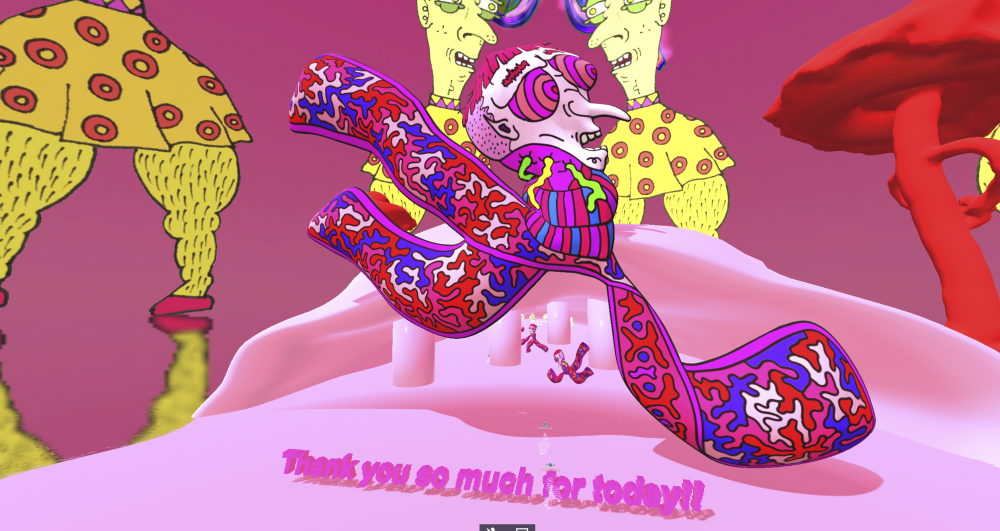 Thank you so much for today! letters.
Thank you so much for today! letters.
At the far end, there is an online store where you can purchase Tomoro Kinoshita’s works. https://rowrowtttt.stores.jp
Tracing the evolution of “Illustration × 3DCG”
His works are composed of colors that could be grotesque and fleshy characters. However, they harmonize strangely with humor and cuteness to create a world view. The references to the physicality of the work and the humorous direction give the impression of enveloping the viewer even more now that it is in VR.
TOMORO KINOSHITA must have developed his worldview through his unique characters and textures in his illustrations. I found it interesting to see the visual changes that occur when those illustrations are transformed into 3DCG expressions.
I think that Tomoro Kinoshita originally drew pictures that expressed not only a single character or event, but also the “entire space” or “world view” when he was illustrating. Because of these characteristics, I feel that rather than simply adding depth to a 2D picture and making it 3D, you have added “time” and “distance” to the space that existed when it was 2D.
The VR work will be like a cave, where you can’t see everything from one place. As you move through the cave step by step, you will slowly experience the world as if it were a rock face or a branch.
In Tomoro Kinoshita’s works, in particular, unique characters and textures flow into the viewer’s mind in sequence, like music, with a sense of urgency and unexpectedness. It’s a feeling of creating a groove between the space of the work and yourself walking in the space, which cannot be created just by looking at a picture with extreme colors.
At first, the groove comes from outside of yourself through VR. However, I also felt that the VR space and the concert of my body melted the boundary between inside and outside, as my inside was inspired by the objects that rippled like my heart and the characters that moved like my intestines. As I explored, I felt as if even my senses were polarized and wispy silhouettes. It was a space where I could dance with the character of something that was not even a person, and myself, who was no longer a person, mixed with the space.
I did not meditate, nor did I stop the music, but I felt that this space was a work that brought out the character and humor in me, the music of my body that I could not see just by looking at it, nor hear just by listening carefully.
About the characters and world view
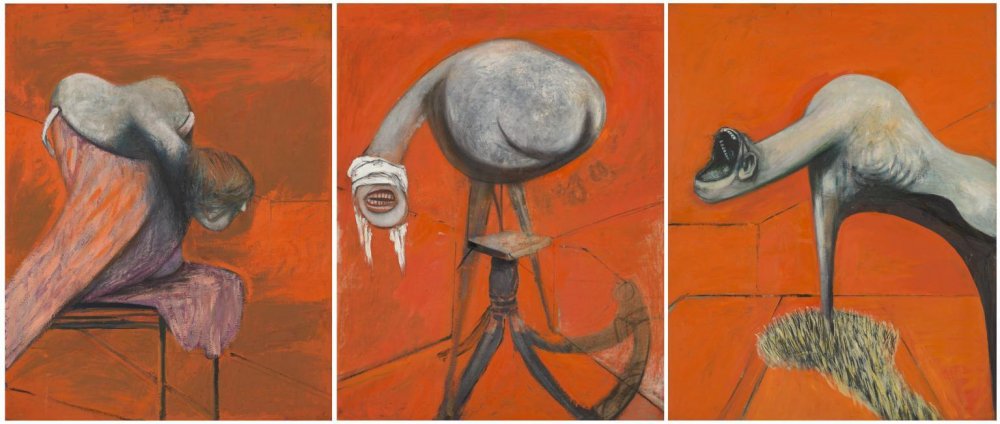 Francis Bacon, Study of Three Figures Based on the Crucifixion of Christ, 1944,from Wikipedia
Francis Bacon, Study of Three Figures Based on the Crucifixion of Christ, 1944,from Wikipedia
When I saw the work, my intuitive impression was that it had similarities to the paintings of Francis Bacon. Bacon commented that the creatures in his works are “images of organic bodies, close to the human form, but thoroughly distorted. Likewise, Tomoro Kinoshita’s works also feature characters that look like surrealistic deconstructions of human beings.
Also, the room in the work appears to be a “triptych” type of presentation, which Bacon used a lot, as it becomes a field of vision composed of rooms on three sides. The characters related to screaming and loneliness, etc. also seemed to have something in common.
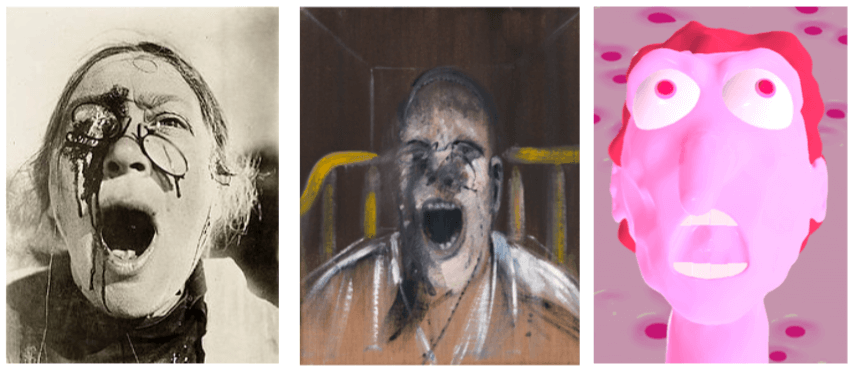 From left to right: Bacon’s influence on the scene on the battleship Potemkin (1925), study for the head of the screaming Pope (1952), and the expression of the character in TOMORO KINOSHITA’s work.
From left to right: Bacon’s influence on the scene on the battleship Potemkin (1925), study for the head of the screaming Pope (1952), and the expression of the character in TOMORO KINOSHITA’s work.
Many of TOMORO KINOSHITA’s works have characters with pop taste, and they are not as tragic and grotesque as Bacon. But what is the difference between the characters and the giants? What is the monotonous behavior that only the Titans repeat? What kind of existence is a character? If you think about it, I think a concrete theme will emerge.
On the other hand, the difference between Bacon and me is the pop and gentleness of his works. Bacon draws many objects and straight lines, so-called “space frames,” in his works. They serve as a guide to how the creatures in his works exist, and also create the impression that the creatures in his works are in a place that is separated from our world. However, in Tomoro Kinoshita’s works, viewers can approach all the characters and see and feel the world together, giving the impression that they can enter into the work and enjoy the world as if they were a part of the characters and textures. We invite you to enter Tomoro Kinoshita’s space and experience the world.
Three Studies by George Dyer” by Francis Bacon, 1969, Louisiana Museum of Modern Art, from the Francis Bacon exhibition
In closing
Once again, I urge you to try the VR experience!
Link to the work: https://gallery.styly.cc/search?q=%23ROWROW%20%23Art
You can feel the charm of the work more by experiencing it in VR. Please click on the link to experience the work for yourself! As you enter the VR space, the work surrounds you, and you feel as if you are being thrown into a new world. As you enter the VR space, you will feel as if you are being thrown into a new world where the work surrounds you and you are surrounded by it. The music and the movement of the objects combine to make the work jump into your body.
